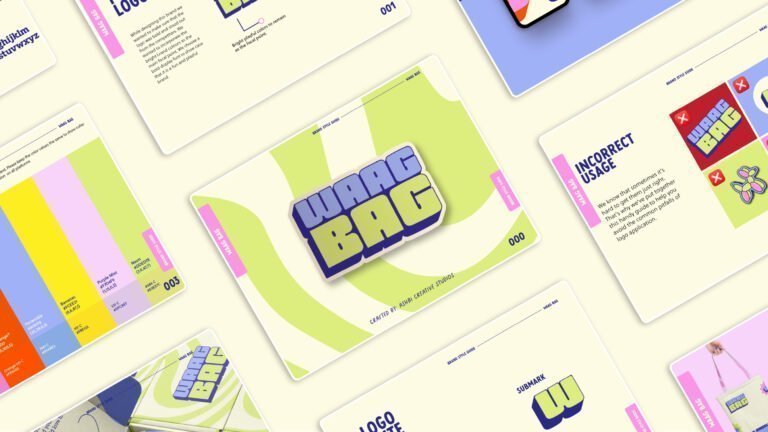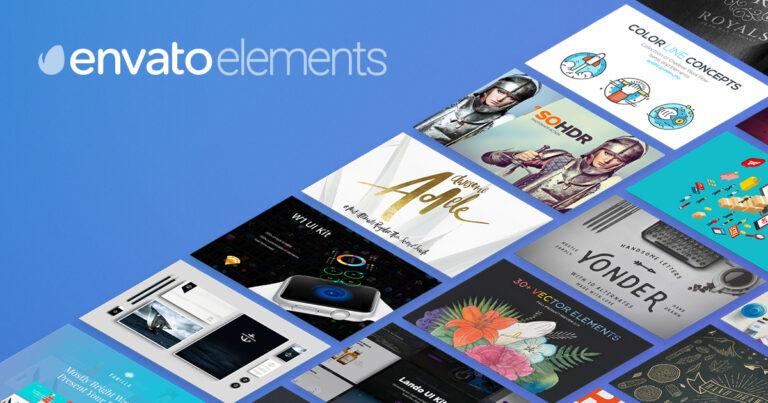Navigating the digital marketing landscape has always been akin to charting unknown waters, and with the advent of Bing Ads, a new horizon emerged. This platform, often overshadowed by its gargantuan counterpart Google, offers unique opportunities for those willing to dive deep into its capabilities. Crafting effective Bing Ads strategies is not just about throwing money at keywords and hoping for the best; it’s an art form that combines creativity with analytics. Whether you’re a small business owner looking to get more bang for your buck or a seasoned marketer aiming to expand your reach, understanding how to leverage Bing advertising, ad groups, and Siri can set you apart in a crowded online space.
Key Takeaways
- Embrace Bing Ads’ Unique Audience: Leverage the distinct demographic of Bing users by tailoring your ads to meet their specific needs and preferences, as discussed in “Understanding Bing Ads.”
- Create Engaging Ads: Focus on crafting clear, compelling ad content that resonates with your target audience, highlighting the importance of “Crafting Compelling Content.”
- Target Wisely: Utilize the insights from “Audience Targeting Strategies” to ensure your ads reach the right people at the right time, maximizing engagement and conversion rates.
- Improve Your Quality Score: Follow the tips in “Quality Score Maximization” to enhance your ad relevance and landing page quality, reducing costs while improving ad positions.
- Analyze Competitors for Edge: Use “Competitive Analysis” to understand your competition’s strategies and find opportunities to differentiate and excel in your ad campaigns.
- Optimize Your Budget: Implement the “Budget Optimization Techniques” to ensure efficient use of your advertising budget, focusing on high-performing campaigns and cutting costs where possible.
Understanding Bing Ads
Platform Choices
Choosing the right platform for your ads is crucial. Bing’s user demographics may differ from other search engines. It’s important to know who uses Bing and why. This knowledge helps target your ads better.
Bing integrates well with Microsoft products. This means if your audience, consisting of marketers and people using Microsoft software, searches for information, they might also use Bing for advertising searches. It’s a good opportunity to reach them.
Consider whether you need a global or local reach. Bing offers both advertising and ad group options, but understanding where your right people audience is can help focus your efforts more effectively.
Budgeting Essentials
Setting clear objectives is the first step in effective budget allocation for advertising in expert mode. Know what you want from your Bing ads campaign before spending money.
Understand the cost-per-click (CPC) on Bing for advertising can vary widely depending on industry, competition levels, and use.
- Low competition keywords often have lower CPC.
- High demand periods can increase costs significantly.
Seasonal trends can affect ad costs too. For example, retail businesses might see higher CPCs during holiday seasons due to increased competition for advertising keywords, as more people use Bing Ads.
Analytics Overview
Utilize Bing’s built-in analytics tools for deeper insights into your advertising campaigns’ performance.
- These tools help track which ads are working and which aren’t.
- You’ll get data on how users interact with your ads, including conversion rates and bounce rates.
It’s vital to track conversion rates closely. They tell you how many people are taking the action you want after clicking an advertising ad.
- A high bounce rate might indicate that while people click, they don’t find what they expected on landing pages.
Compare performance metrics against industry benchmarks whenever possible.
- Knowing how competitors perform can highlight areas of improvement or successful strategies worth emulating.
Crafting Compelling Content
Ad Copy Essentials
Creating content that stands out is key to effective Bing ads strategies. Your ad copy must grab attention fast. To do this, focus on what makes your offer unique in advertising. Highlight your unique selling points in a way that’s quick and easy to understand.
For example, if you’re selling an eco-friendly water bottle, mention its durability and how it helps reduce plastic waste. This touches on both the product’s uniqueness and its environmental benefit.
Next, clear calls-to-action (CTAs) are crucial. They guide users on what to do next. Whether it’s “Shop Now,” “Learn More,” or “Sign Up Today,” your CTA should be direct and compelling.
Lastly, weave in relevant keywords naturally within your ad copy. This boosts visibility not just on Bing but also contributes to overall SEO efforts. If you’re targeting fitness enthusiasts, phrases like “durable workout gear” can help attract the right audience.
Image Optimization
Images can make or break your ad’s performance. Always use high-quality images that directly relate to your offering. A crisp image of the product or a happy customer using it can significantly increase engagement rates.
Remember to keep image sizes optimized for quick loading without sacrificing quality. Large files slow down page loading times which might push potential customers away.
Alt tags aren’t just for SEO; they also enhance web accessibility by describing images through text when images can’t be displayed. Incorporate keywords into alt tags thoughtfully for an added SEO boost. Imagine someone searching for “eco-friendly yoga mats.” An alt tag like “durable eco-friendly yoga mat” could improve chances of them finding your product through an image search.
Crafting compelling content involves more than writing good text or choosing pretty pictures. It requires strategic thinking about how each element of your ad communicates with potential customers. By focusing on these essentials—succinctly highlighting unique selling points, crafting clear CTAs, incorporating relevant keywords naturally into ad copies, ensuring images are high-quality yet optimally sized, and utilizing alt tags wisely—you set the foundation for successful Bing ads campaigns.
Audience Targeting Strategies
Refinement Techniques
After crafting compelling content, refining your audience targeting strategy is crucial. Regularly reviewing and adjusting keyword selections can significantly enhance the effectiveness of your Bing ads. This process involves analyzing which keywords drive the most traffic and conversions, then focusing your efforts on those.
A/B testing ad copy and landing pages is another powerful technique. By creating two versions of an ad or a landing page, you can see which one performs better. This method helps in understanding what resonates with your audience. It’s about finding the right message that clicks with potential customers.
Segmenting campaigns for better targeting further refines your approach. For instance, separating campaigns by demographics (age, gender) or interests allows for more personalized advertising strategies. This means you can tailor messages that speak directly to a specific segment of your audience.
In-Market Audiences
Identifying and targeting in-market audiences ready to purchase elevates the precision of your advertising strategy. These are users who have shown interest in products or services similar to yours through their online behavior. Tailoring ad messages to these segments increases the likelihood of converting interest into sales.
To effectively reach in-market segments:
- Craft messages that highlight benefits relevant to their immediate needs.
- Use persuasive calls-to-action that encourage quick decision-making.
Monitoring audience performance and adjusting bids accordingly ensures optimal use of budget resources while maximizing returns from high-performing segments.
Quality Score Maximization
Optimization Techniques
After focusing on audience targeting strategies, it’s crucial to turn our attention towards quality score maximization. This aspect is key in boosting the performance of your Bing Ads campaigns. Let’s dive into some effective techniques.
Implementing bid adjustments based on device performance can significantly impact your ads’ effectiveness. Analyze which devices bring in more conversions—be it mobile phones, tablets, or desktops—and adjust your bids accordingly. For instance, if you notice higher engagement rates from mobile users, increasing your bids for mobile devices could drive better results.
Dayparting is another strategy that shouldn’t be overlooked. It involves scheduling your ads to appear at specific times of the day when they’re most likely to reach an engaged audience. If data shows that your target demographic is more active online during evening hours, then aligning your ad schedule with this insight can enhance visibility and click-through rates.
Lastly, leveraging location targeting helps tailor your campaigns to audiences in specific areas. This technique is especially beneficial for localized businesses aiming to attract nearby customers. By narrowing down the geographic scope of where your ads are shown, you can ensure they’re seen by people within a relevant vicinity—increasing the likelihood of attracting foot traffic or local online sales.
- Bid adjustments: Increase bids on high-performing devices.
- Dayparting: Schedule ads for peak activity times.
- Location targeting: Focus efforts on targeted geographical areas.
Competitive Analysis
Campaign Comparisons
To refine your effective Bing Ads strategies, start by benchmarking against past campaigns. Look at the key performance indicators (KPIs) of previous efforts. This tells you what worked and what didn’t. Then, dive into analyzing competitor campaigns on Bing. What are they doing that you aren’t? Understanding their tactics can provide valuable insights.
Evaluating ROI is crucial for future adjustments. If a campaign isn’t giving back enough in return, it’s time to tweak your approach. This could mean changing up keywords or ad copy based on what has proven successful before.
Importing Campaigns
From Google Ads
Google Ads often serves as a fertile testing ground for strategies that might work well on Bing, albeit with some tweaks due to audience differences. Transfer successful Google Ads strategies but modify them to fit Bing’s unique audience characteristics.
Use Google Ads performance data as a baseline for your Bing campaigns. It helps set realistic expectations and goals. Adapting keyword strategies is essential here because each platform interprets search intent differently.
From Facebook Ads
When bringing over strategies from Facebook Ads, adjust the visual content strategy first. Bing has specific format requirements that may differ significantly from Facebook’s more flexible setup. Then, consider how demographic targeting translates between platforms. While both allow targeting based on demographics like age or location, the way users interact with ads can vary greatly between platforms.
Finally, leverage cross-platform insights for cohesive messaging across all channels where you advertise. This ensures your brand maintains consistency no matter where it appears.
Budget Optimization Techniques
Allocation Strategies
After understanding your competition, it’s crucial to focus on how you allocate your budget. Balance is key. Splitting funds between high and low performing ads ensures that you’re not putting all your eggs in one basket.
High performers get the fuel they need to excel further, while low performers are given a chance to improve or reveal valuable insights for future strategies.
Allocating more budget during peak periods can significantly boost visibility and conversions. Think about retail businesses increasing ad spend before holidays or special events. This tactic leverages higher user activity times, maximizing potential returns.
Diversifying ad formats also plays a critical role in reaching wider audiences effectively. By mixing text ads with visual or video content, you cater to different preferences, enhancing engagement across various customer segments.
Performance Leveraging
With data from competitive analysis and ongoing campaigns at hand, scaling up successful campaigns becomes straightforward but essential. Analytics offer clear insights into what works best — these are the areas where investing more heavily can pay off significantly.
Conversely, redirecting funds from underperforming ads into promising ones allows for agile management of resources. It’s about being proactive rather than reactive; if certain ads aren’t delivering as expected despite optimization efforts, reallocating those funds could yield better results elsewhere.
Experimentation is another cornerstone of effective Bing Ads strategies. The digital advertising landscape evolves constantly with new features and formats becoming available regularly.
- Experiment with these innovations early.
- Assess their performance meticulously. Doing so can uncover untapped opportunities for engagement and conversion that competitors might overlook.
Advanced Features and Extensions
UET Tag Utilization
Universal Event Tracking (UET) tags are a game-changer for anyone looking to dive deep into user behavior on their website. By implementing these tags, you unlock the ability to track conversions, goals, and actions visitors take. This insight is invaluable. It lets you see what’s working and what’s not.
With UET data in hand, refining your targeting becomes a precise science rather than guesswork. Adjusting your bidding strategies based on real user actions can significantly improve your ad performance. Imagine knowing exactly where users drop off or which pages drive the most conversions. That’s the power of UET tags.
Moreover, this feature aligns perfectly with expert mode capabilities in Bing Ads. You gain access to advanced features that allow for more granular control over campaigns across different devices next in line for optimization.
Video Extensions
Now let’s talk about video extensions—a dynamic way to catch a viewer’s attention quickly. Incorporating video into your Bing ads isn’t just about being flashy; it’s about engagement and conveying your message fast. Select high-quality videos that get straight to the point within seconds.
Testing plays a crucial role here as well. Not all videos will perform the same way, so finding that sweet spot in terms of length is key for keeping viewers interested without losing them midway through.
- Shorter videos might work better for simple messages or offers.
- Longer ones could be beneficial when telling a story or explaining complex services/products.
This strategy taps directly into how people consume content today: quickly and visually. Video extensions enhance ad visibility drastically compared to text-only ads by providing an immediate visual hook.
Performance Analysis and Reporting
Campaign Metrics
To make your Bing ads more effective, paying attention to campaign metrics is crucial. Click-Through Rate (CTR) and Conversion Rate stand out as primary indicators of how well your ads resonate with the audience. A high CTR means that a good portion of viewers find your ad compelling enough to click on it. Meanwhile, a strong Conversion Rate indicates that these clicks are translating into desired actions, such as purchases or sign-ups.
On another front, analyzing the Cost Per Acquisition (CPA) gives you insight into the efficiency of your campaign. It tells you how much you’re spending to acquire one customer. Lower CPA values signify higher campaign efficiency, meaning you’re getting more bang for your buck.
Lastly, keeping an eye on the Quality Score can shed light on ad relevance and performance from Bing’s perspective. This score reflects how relevant your ad content and keywords are to user queries. High scores can lead to better ad positions at lower costs.
Running Reports
Consistent performance evaluation through regular reporting is key in ironing out any kinks in your strategy and making data-driven decisions for future campaigns.
Scheduling reports allows for a steady stream of data without having to manually pull information each time. This way, you ensure no significant shifts or trends go unnoticed due to gaps in analysis.
Customizing these reports plays a pivotal role too. By focusing on metrics that align closely with business goals—whether it’s increasing brand awareness or driving sales—you tailor the insights gathered directly towards assessing progress against those objectives.
Moreover, delving into trend analysis over time via these customized reports helps identify patterns or seasonal fluctuations affecting performance. This strategic overview enables adjustments not just reactively but proactively—anticipating changes before they happen based on historical data.
Troubleshooting and Best Practices
Keywords Issues
To optimize effective Bing ads strategies, addressing keyword issues is crucial. Regularly identifying and eliminating underperforming keywords can significantly improve campaign performance. This process ensures that your budget is allocated to keywords that drive results.
Bing’s search term reports are invaluable for expanding your keyword lists. They reveal new opportunities by showing what users are actually searching for. This insight allows you to add relevant keywords that you might have missed.
It’s also important to balance broad, phrase, and exact match keywords in your campaigns. This strategy ensures comprehensive coverage without causing overlap among the keywords. For instance, while broad match offers wide visibility, exact match targets more specific queries. Phrase match falls somewhere in between, offering a balance of reach and relevance.
Impressions Management
Monitoring impression share helps understand how visible your ads are in auctions compared to potential impressions they could receive. A low impression share indicates lost opportunities due to either budget constraints or ad rank issues.
To increase impression share, consider adjusting bids or improving ad quality through better relevance and landing page experiences. Higher bids can make your ads more competitive in auctions, while improved ad quality can boost their ranking without increasing costs.
Evaluating the positions of ads on search result pages is another key aspect of optimizing effective Bing ads strategies. Ads at the top of the page generally get more clicks than those further down. Analyzing where your ads appear can highlight optimization opportunities such as bid adjustments or enhancements to ad copy and landing pages.
Final Remarks
Diving into Bing Ads can be your golden ticket to marketing success, and you’ve got the playbook right here. From crafting content that sticks like glue, targeting your audience with laser precision, to squeezing every ounce of value from your budget—these strategies are your roadmap. Think of it as tuning your engine for the ultimate performance; every tweak counts.
Now, grab this knowledge and run with it. Test, tweak, and transform your campaigns into conversion machines. Remember, the digital world waits for no one, and the best time to start is yesterday. So, what are you waiting for? Dive in, make waves, and let’s see your brand soar on Bing. Your next chapter in digital dominance starts now. Let’s get cracking!
Frequently Asked Questions
How can I improve my Bing Ads performance?
To boost your Bing Ads performance, focus on crafting compelling content that resonates with your audience. Utilize audience targeting strategies effectively and aim to maximize your Quality Score through relevant ads and keywords. Don’t forget to analyze competitors and optimize your budget for the best results.
What are some advanced features of Bing Ads I should be using?
Leverage advanced features like ad extensions, which add extra info to your ads (like location or phone number), making them more appealing. Also, explore automated bidding strategies to optimize your bids based on conversion goals.
How do I target the right audience with my Bing Ads?
Use Bing’s Audience Targeting options such as demographics, locations, and device types to narrow down who sees your ads. This ensures that you’re speaking directly to those who are most likely interested in what you’re offering.
Why is Quality Score important in Bing Ads?
Quality Score matters because it reflects how relevant and useful your ad is to users, based on their search queries. A higher Quality Score can lead to lower costs per click (CPC) and better ad positions, stretching your advertising dollars further.
Can competitive analysis help improve my Bing Ad campaigns?
Absolutely! By analyzing what competitors are doing—what keywords they bid on, their ad copy, etc.—you can identify gaps in their strategy or areas they’re overlooking. This insight allows you to adjust your approach for a competitive edge.
What’s the best way to manage my budget with Bing Ads?
Start by setting clear objectives for what you want from each campaign (e.g., clicks vs conversions). Use tools like daily budgets and bid adjustments for specific times/days or devices that perform well. Regularly review performance data so you can reallocate funds efficiently towards high-performing ads.
Are there any common pitfalls I should avoid with my Bing Ads campaigns?
One major pitfall is neglecting negative keywords; this helps prevent wasting money on irrelevant clicks by excluding terms unrelated to what you’re offering. Another mistake is not regularly reviewing campaign analytics; staying informed enables quick adjustments for improved performance.









